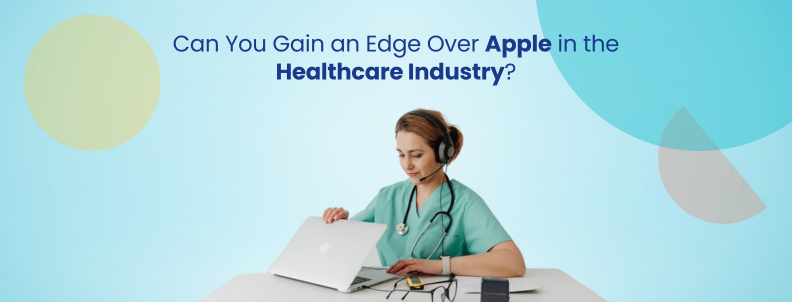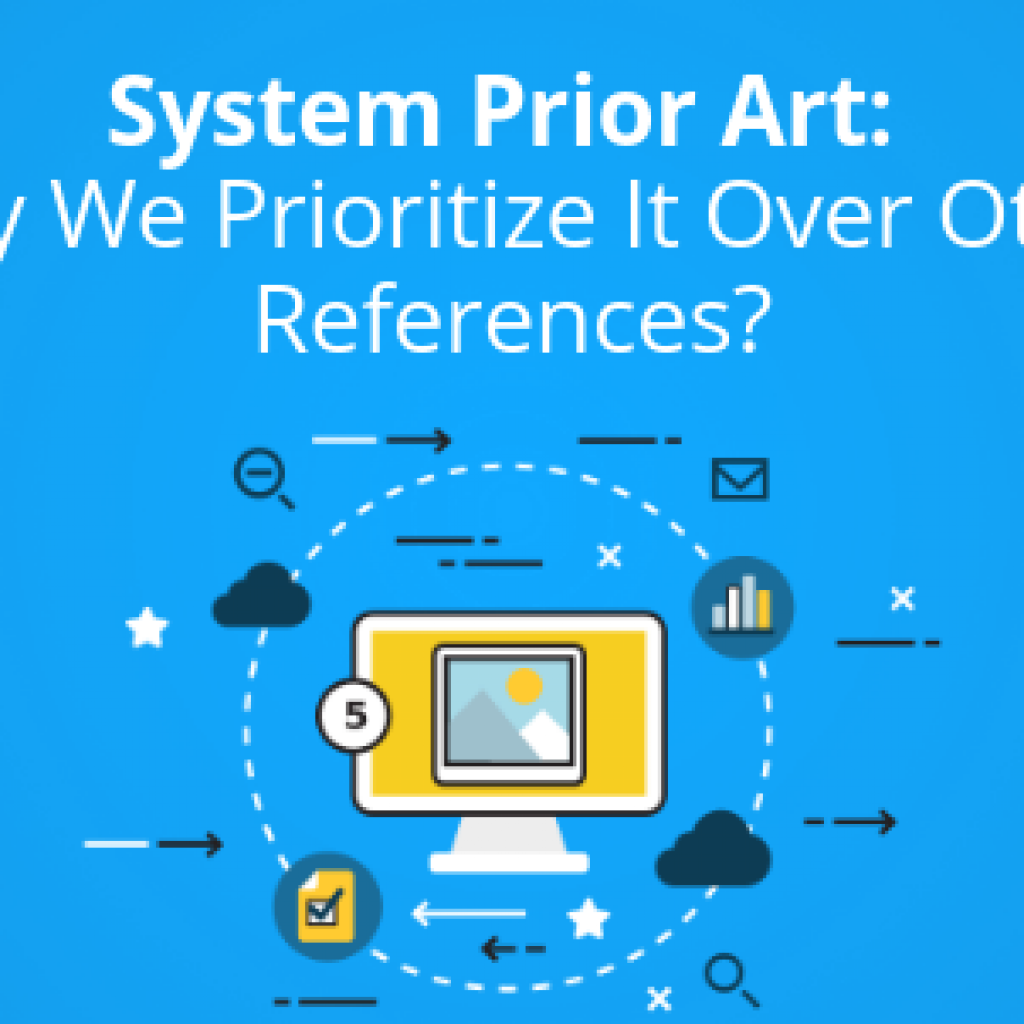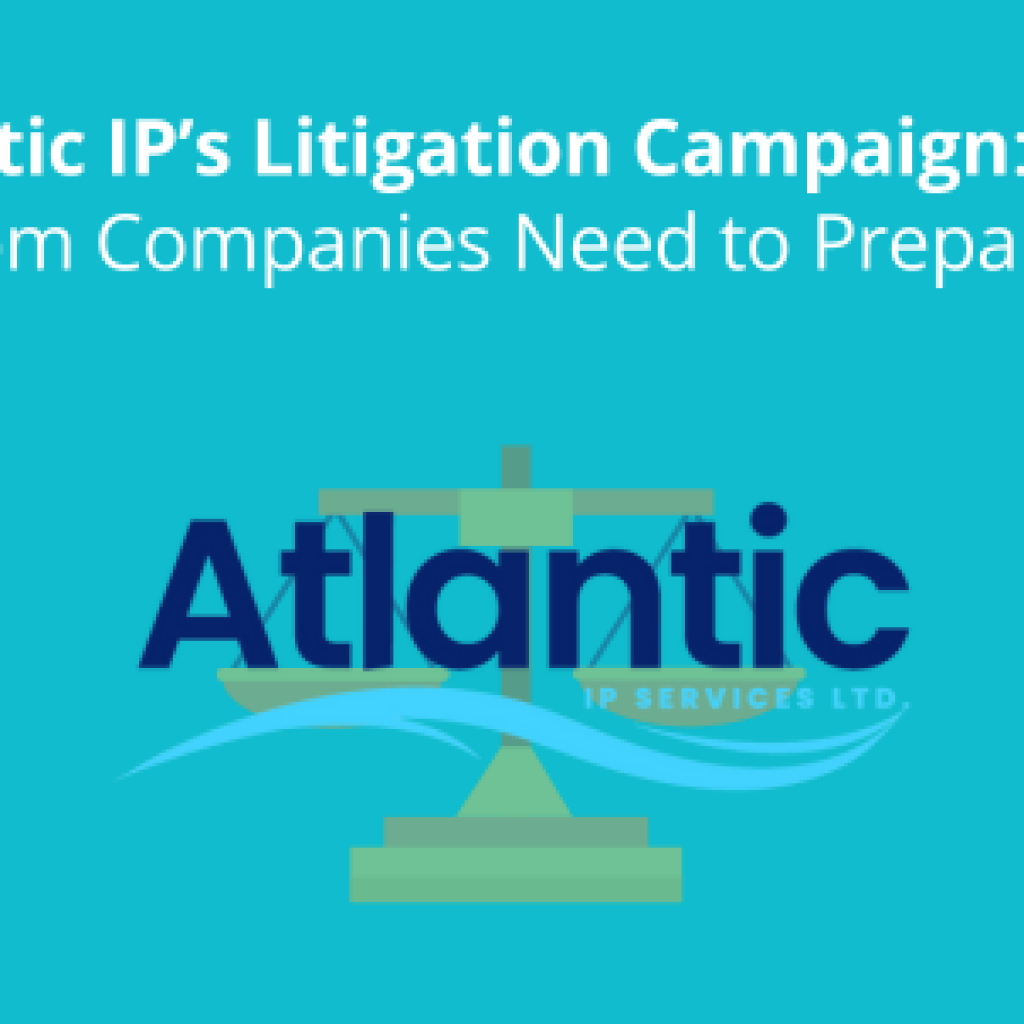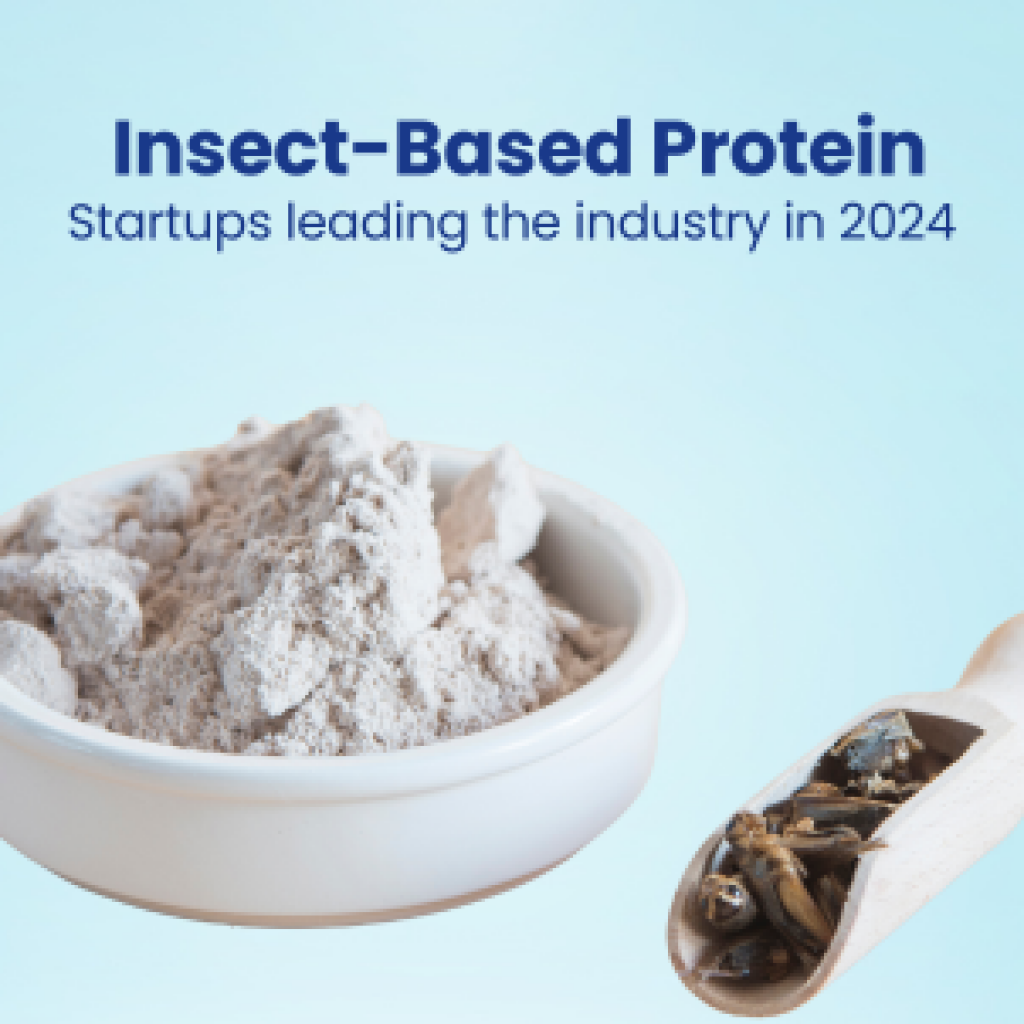Did you know Apple acquires a new company every three to four weeks? But is that really surprising, or is it a key part of Apple’s expansion in different industries such as Healthcare?
As emphasized in its report from last year, Apple has made significant strides in the healthcare sector. The company envisions that the healthcare data collected by its software and hardware will empower medical providers, but it is not working on this endeavor alone. Apple is leveraging the potential of numerous startup acquisitions to enable users to engage with their health.
Acquisitions are a great way to enlist the expertise of a smaller company and grow faster instead of trying to reinvent the wheel by yourself. These acquisitions can also be motivated by an intent to gain authority over any patents the smaller company may possess and for the company to expand into a new domain/industry.
Apple’s CEO, Tim Cook, has revealed that they have acquired at least 100 companies so far. But the real number is likely much higher as they don’t always publicize every such transaction.
Industry leaders, like Apple, scout and acquire startups in certain industries to bolster their products and services.
Let’s understand how and why Apple has been scouting for and acquiring medical tech startups to strategically grow in the healthcare sector.
Apple’s Acquisitions in the Healthcare Sector
1. Acquired Gliimpse – 2016

| Company | Gliimpse |
| HQ | Redwood City, California, United States |
| Total Funding Raised | $1.1 million |
| Acquisition Amount | undisclosed |
| Top Investors | National Science Foundation |
| Innovative Tech | The company has developed an extensive library of personal health data to produce personalized insights for people. |
In 2016, Apple acquired Gliimpse, a personal health and wellness startup conceived by Anil Sethi and Karthik Hariharan in 2013. Through a seed funding round and a grant from the National Science Foundation, the startup raised a modest $1.1 million by 2015.
Interestingly, Anil Sethi had worked as a systems engineer with Apple in the late 1980s, indicating a previous connection with the company. This acquisition may reflect his long-term vision and business objectives coming to fruition.
For Apple, the acquisition was meant to strengthen its presence in the sector after releasing the Apple watch a year prior. By acquiring Gliimpse, Apple gained access to the personal health data platform Gliimpse built that enables any American to collect, personalize, and share a picture of their health data.
Apple could now employ Gliimpse’s resources to enhance its HealthKit framework and open-source projects like ResearchKit & CareKit APIs. These tools can help patients, clinicians, researchers, and developers access and process important health and wellness data through various mobile devices.
Apple is undoubtedly capable of developing an equivalent system from the ground up. But simply buying the startup put Apple into the fast lane and gave them the first-to-market advantage. Acquiring the ownership of the required technology saved them from potential litigation damages, their valuable time, and the development costs of creating such a platform from scratch.
2. Acquired Lattice Data – 2017

| Company | Lattice Data |
| HQ | Menlo Park, California, United States |
| Total Funding Raised | $20 million |
| Acquisition Amount | $200 million |
| Top Investors | Madrona, DARPA |
| Innovative Tech | Analytics company specializing in “Dark Data” processing to produce insights. |
Lattice Data were specialists in drawing useful insights from random data collection, such as unstructured text, referred to as “dark data.” They used machine learning to put that data into order and make it more usable. The company was founded in 2015 by Chris Re and Mike Cafarella- the co-creator of Hadoop.
Lattice hadn’t driven much media buzz since its inception and remained under the radar despite raising $20 million in funding from DARPA and others for commercializing Stanford’s DeepDive project.
Upon acquisition, Apple reportedly used Lattice Data’s capabilities to some extent in their Photos app. But it is unclear what exactly they used it for. Additionally, Apple may take advantage of the medical genetics database that DeepDive has created.
The DeepDive project appears to be paused in “maintenance mode” after being acquired, perhaps because Apple has different plans for its progress.
3. Acquired Beddit – 2017

| Company | Beddit |
| HQ | Espoo, Southern Finland, Finland |
| Total Funding Raised | $8 million |
| Acquisition Amount | undisclosed |
| Top Investors | Inventure, Michael Widenius, Sami Inkinen, Finnvera Venture Capital |
| Innovative Tech | Uses a USB-powered accessory to track user’s sleep quality and give feedback through their app. |
Beddit specializes in automatic and active sleep tracking using a thin, USB-powered belt under your bed sheet. Beddit will collect, compile, and present the data on the mobile app. The company was founded in 2007 by Lasse Leppäkorpi and managed to raise $8 million in total funding by 2014.
Using Beddit, users can set sleep quality goals, get tips on improvements, and see their progress after each night of sleep. The purpose of Beddit’s belt was to avoid having to wear any devices on your person when sleeping, but Apple certainly had other plans.
Apple bought Beddit the same year as Lattice Data.
Along with the company’s acquisition, Apple gained ownership over the following patents that belonged to Beddit.
| Patent Application | Title | Status |
| US7862523B2 | Force or pressure sensor and method for applying the same | Active |
| US11298075B2 | Physiological monitoring method and system | Active |
| US10368799B2 | System for determining the quality of sleep | Active |
| US9072437B2 | Method, apparatus, and computer program product for detecting heart rate | Active |
| CN107205660A | Domestic sleeping monitoring system | Pending |
Apple is likely using Beddit’s sleep tracking tech and expertise for their watchOS in the Apple watch product line. But we assume some would be happy to grab an Apple-branded smart blanket, or should I say, an “iBlanket,” if it reached their nearest store shelves!
4. Acquired Tueo Health – 2018

| Company | Tueo Health |
| HQ | Redwood City, California, United States |
| Total Funding Raised | $1.1 million |
| Acquisition Amount | undisclosed |
| Top Investors | Launchpad Digital Health, Plug and Play Ventures, A-Level Capital, |
| Innovative Tech | Developed a sensor-based solution to help people to manage asthma in children without needing hospital visits |
Tueo Health, a San Francisco-based startup company, was working on an app with commercial breathing sensors that empowers parents and families to monitor pediatric asthma symptoms in sleeping children. Founded and led by Bronwyn Harris and Anura Patil, Tueo Health raised $1.1 million in seed round funding in July 2017.
Their vision to enable parents to avoid hospital-based care and related expenses using asthma control gained much traction among investors. Their solution includes sensor-based nocturnal monitoring, personalized data-driven analytics, a mobile app that provides educational and clinical context for the collected data, and an asthma coach aiding self-management.
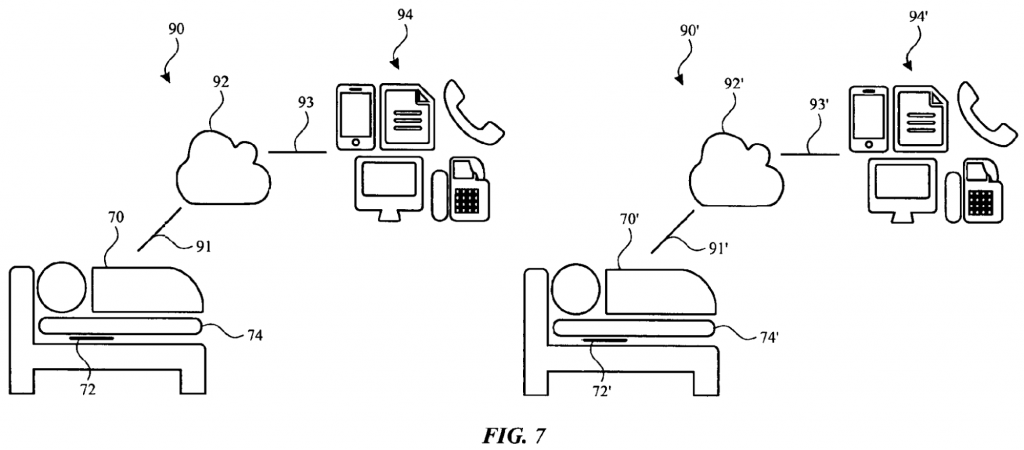
Snapshot from US20200253547A1 patent
Apple initially pursued Tueo to get the patent rights for the in-bed health sensor system but acquired the entire startup instead.
As far as reports indicate, we haven’t witnessed Apple use Tueo’s med-tech expertise in their existing devices yet. But knowing Apple’s extremely strict quality standards, they may already be integration-testing Tueo’s tech into their ecosystem.
Apple’s MedTech Acquisitions Timeline
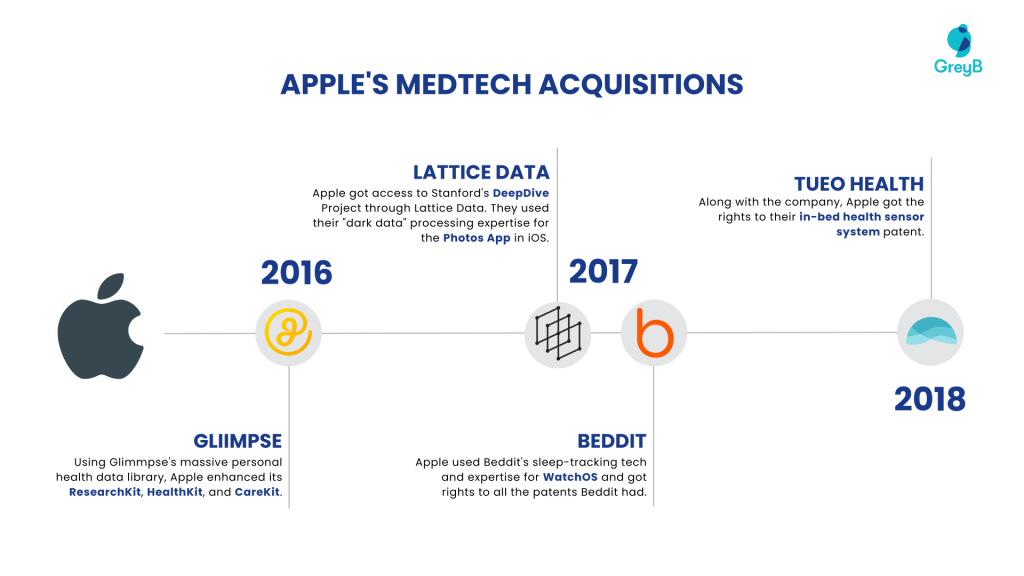
Editor’s Note: Get a holistic view of Apple’s patent portfolio here.
Apple’s Vision in Healthcare
Apple has made significant investments and collaborations with medical companies and governments. For instance, Apple collaborated with the government of Singapore to initiate LumiHealth, a personal well-being app that uses the Apple watch. LumiHealth was developed by working with physicians and healthcare professionals to gain behavioral insights through mobile and wearable technology.
Singapore residents could use this app on their iPhones and Apple Watches to complete wellness challenges like walking, eating healthy, and mindfulness sessions to earn “LumiPoints” and coins. This initiative was an effective approach to gamify people’s well-being journey and make it fun to stay healthy.
Apple had already announced a partnership with Aetna, a life insurance company, back in 2019. They built an app called Attain to encourage smartphone and wearable device users to earn reward points through “healthy behavior.”
Ben Wood, chief analyst at CCS Insight, predicts Apple will introduce its own health insurance in 2024!
“They’ve got a wealth of personal health data through Apple Watch,” adds Ben Wood, “If they join some of the dots together, they can become a very competitive health insurance player, and that potentially is going to have quite an impact on the structure of the healthcare market in the U.S.”
They’re entering the US health insurance market by partnering with a “major insurer,” whose identity we have not confirmed yet. The tech giant is very likely looking to build their services business upon the vast amounts of data it has been able to collect and profile through Apple watches.
We found more indications that Apple is finalizing acquisitions of two more healthcare tech companies:
- Glooko, a SaaS company that provides a mobile app for diabetes patients,
- Evidation Health, Inc. – an all-in-one educational healthcare app that rewards users with points for achieving health goals.
Most of these companies tend to operate similarly. We believe it’s intentional and part of Apple’s acquisition strategy. Nearly all of Apple’s acquisitions in medtech have been to bolster their health data monitoring, gathering, and processing capabilities, primarily through the Apple Watch. Therefore, you may not be surprised that Ben predicts that a third of Apple’s revenue will be from its software and service lines by 2030. Considering their annual revenue numbers, that’s a massive amount to behold.
With Apple’s acquisition strategy in mind, some promising health-tech companies may give you an edge in the medtech field.
MedTech Startups that can help you gain an Edge
1. Nference

Nference partners with medical institutions and healthcare systems to collect and process vast quantities of biomedical data. Their software collects the data and provides insights to healthcare professionals.
Founded in Massachusetts in 2013, the company has received funding from the likes of Mayo Clinic Ventures. It is the investment arm of Mayo Clinic, which has partnered with nference on its Clinical Data Analytics Platform. Nference has raised a total capital of $152.7 million from seven funding rounds.
The company holds the following patents for its technologies and working concepts:
| Patent Application | Title | Status |
| US11062218B2 | Systems, methods, and computer-readable media for visualization of semantic information and inference of temporal signals indicating salient associations between life science entities | Active |
| US20210019287A1 | Systems and methods for populating a structured database based on an image representation of a data table | Pending |
| US11545242B2 | Systems and methods for computing with private healthcare data | Active |
| US20230197200A1 | Method of and system for prediction of viral variants characteristics | Pending |
| US20210248268A1 | Systems and methods for computing with private healthcare data | Active |
| US20230075138A1 | Methods for treating and evaluating covid-19 patients | Pending |
| WO2022081712A1 | Systems and methods for retrieving clinical information based on clinical patient data | Pending |
| US20220372082A1 | Compositions and methods for treating sars-cov-2 infections | Pending |
| WO2021146694A1 | Systems and methods for mapping a term to a vector representation in a semantic space | Pending |
| WO2021178689A1 | Systems and methods for computing with private healthcare data | Active |
| US20210019287A1 | Systems and methods for populating a structured database based on an image representation of a data table | Pending |
| US11545242B2 | Systems and methods for computing with private healthcare data | Active |
| US20220189636A1 | Systems and methods for diagnosing a health condition based on patient time series data | Pending |
| US20230178197A1 | Techniques for predicting immunosuppression status | Pending |
| US20220016233A1 | Identifying patient populations vulnerable to viral infection and methods of inducing heterologous immunity in the same | Pending |
| WO2023081795A1 | Method and system for determining relationships between linguistic entities | Pending |
| US20230071353A1 | Systems and methods for adaptively improving the performance of locked machine learning programs | Pending |
| US20230105505A1 | Method of and system for detection of durability of antibody response to vaccination | Pending |
| US20220189634A1 | Noninvasive methods for detection of pulmonary hypertension | Pending |
Nference and their expertise can be highly beneficial for projects that provide tailored, data-backed patient recommendations using their known information for clinical use.
2. Senseye
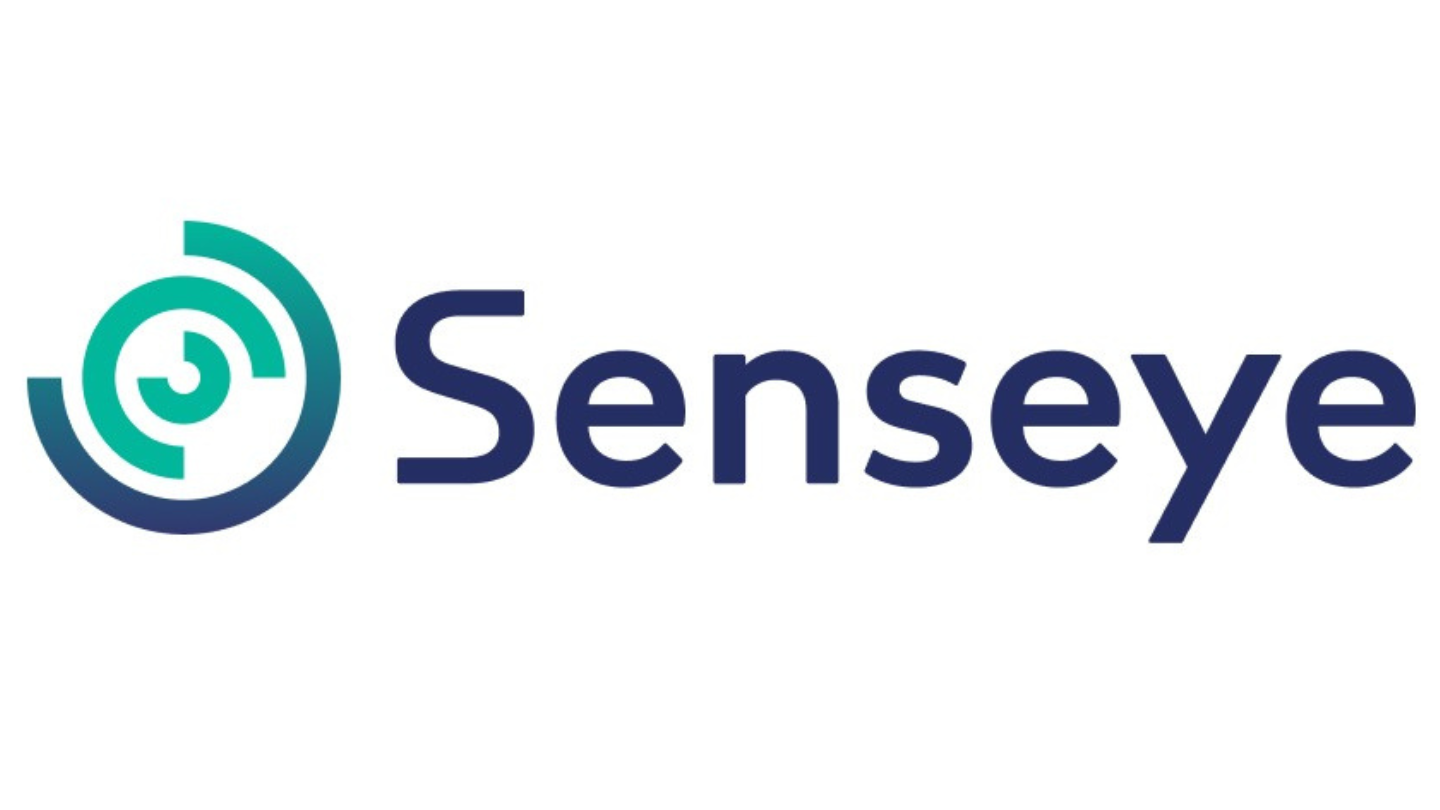
Senseye is a unique mental health visibility platform that uses your smartphone camera to detect post-traumatic stress disorder (PTSD). It measures eye response to stimuli to diagnose and track mental health issues.
Founded by David Zakariaie, the startup has raised $8 million in funding and recently attracted interest from top healthcare investors, such as MedTech Innovator.
Senseye holds or has applied for the following patents around their technology and innovations:
| Patent Application | Title | Status |
| US10575728B2 | Emotional intelligence engine via the eye | Active |
| US11382545B2 | Cognitive and emotional intelligence engine via the eye | Active |
| US10331742B2 | Thresholds for key performance indicators derived from machine data | Active |
| US20220313083A1 | Cognitive, emotional, mental and psychological diagnostic engine via the eye | Pending |
| US20210186396A1 | Ocular system to assess operational risk | Pending |
| US20220211310A1 | Ocular system for diagnosing and monitoring mental health | Pending |
Senseye can be a valuable acquisition for offering PTSD diagnosis solutions to people using advanced computer vision technology. The company claims its diagnostics can be as accurate as the CAPS-5 measurement standard.
3. Hinge Health
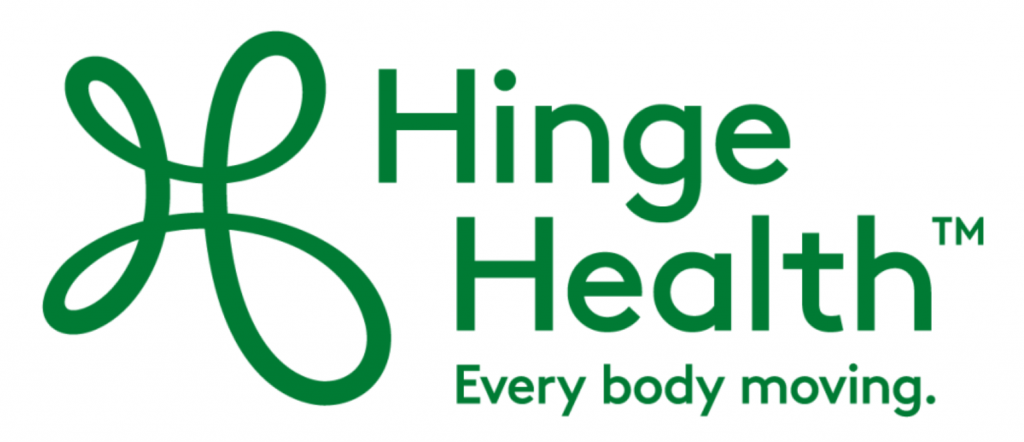
Hinge Health is quickly becoming a market leader in digital musculoskeletal pain treatment. Founded 2015 in San Francisco, California, the company has raised over $1 billion in ten rounds of funding.
Their app guides you through personalized exercises designed by physical therapists and recommended by their assigned coaches. Patients experiencing chronic pain may receive the Hinge Health exercise kit free of charge. They use computer vision and wearable motion tracking sensors to detect and assist with exercises accurately.
In 2021, they acquired Enso, a company that makes a pain relief device that uses electric impulses.
Enso users reported an average of 54% decrease in pain in just four weeks.
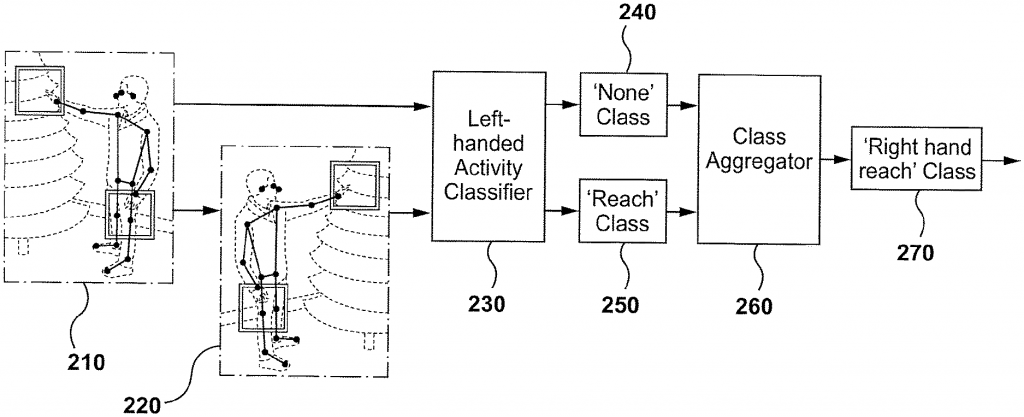
Snapshot from US20220148296A1
Hinge Health owns the following patents for their musculoskeletal therapy tech and methodologies:
| Patent Application | Title | Status |
| US20220148296A1 | Method and system for symmetric recognition of handed activities | Active |
| US20190251340A1 | Method and system for activity classification | Active |
| US8862238B2 | System and method for managing pain | Active |
| US10792495B2 | Neuromodulation device and method for use | Active |
| US20210264144A1 | Human pose analysis system and method | Pending |
| AU2022218177A1 | Patient-centered musculoskeletal (msk) care system and associated programs for therapies for different anatomical regions | Pending |
| AU2020436769A1 | Method and system for matching 2D human poses from multiple views | Pending |
| CA3046609A1 | Method and system for extrinsic camera calibration | Pending |
| CA3046612A1 | Method and system for monocular depth estimation of persons | Pending |
| US20220246268A1 | Patient-centered musculoskeletal (msk) care system and associated programs for therapies for different anatomical regions | Pending |
| WO2022118061A1 | Object three-dimensional localization in images or videos | Pending |
| EP4121945A1 | Joint rotation inferences based on inverse kinematics | Pending |
| WO2022269312A1 | Mechanical weight index maps for mesh rigging | Pending |
| CA3196012A1 | Three-dimensional mesh generator based on a two-dimensional image | Pending |
| WO2022243739A1 | Pose parsers | Pending |
| WO2023281299A1 | Deriving insights into the motion of an object through computer vision | Pending |
| WO2023007215A1 | Two-dimensional pose estimations | Pending |
| WO2022144594A1 | Object identifications in images or videos | Pending |
| WO2022090775A1 | Three-dimensional mesh generator based on two-dimensional image | Pending |
| CA3172247A1 | Markerless motion capture of hands with multiple pose estimation engines | Pending |
Companies working on digital pain relief products can take Hinge Health’s ecosystem and industry knowledge to fast-track their way to building effective musculoskeletal healing solutions.
4. Podimetrics
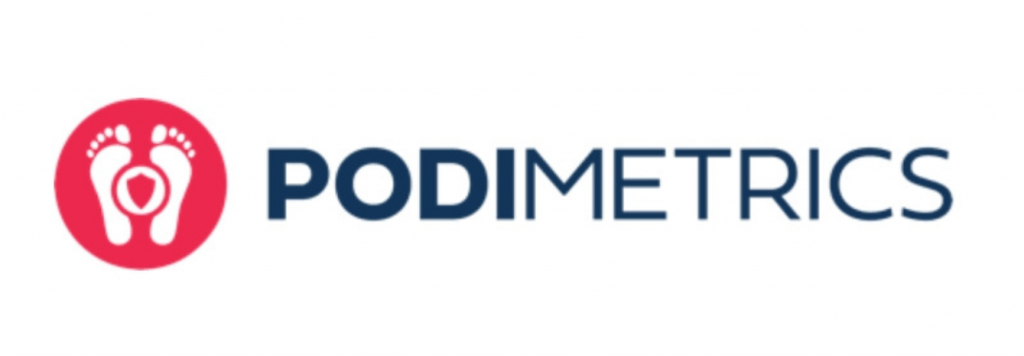
Podimetrics is a Boston-based virtual care management company for diabetes patients to prevent foot complications. They’ve developed SmartMat™, an FDA-approved device that can scan patients’ feet in 20 seconds and detect early signs of inflammation right from people’s living rooms! The device can also send automatic reports and alerts to empower more informed decisions.
Led by Jon Bloom as CEO, Podimetrics has raised $98.3 million through seven funding rounds.

They hold a multitude of patents for their solutions:
| Patent Application | Title | Status |
| US9271672B2 | Method and apparatus for indicating the emergence of an ulcer | Active |
| JP6297696B2 | Device for measuring the temperature distribution in the sole of the foot | Active |
| EP3537957A4 | Ulcer detection apparatus and method with varying thresholds | Pending |
| CN115243606A | Device and method for monitoring peripheral diabetic neuropathy and/or peripheral arterial disease | Pending |
| US20220211277A1 | Method and apparatus of monitoring foot inflammation | Pending |
| US20230172471A1 | Apparatus and method of measuring blood flow in the foot | Pending |
Their expertise in detecting and tracking diabetes in patients across various stages of severity may greatly benefit companies looking to build a solution among their existing products for enhanced patient care at home.
5. Eight Sleep
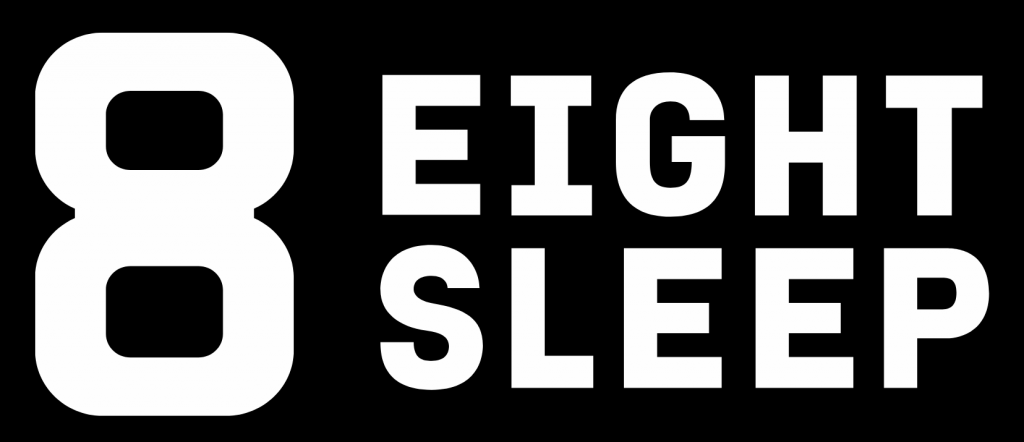
Eight Sleep is certainly one of the most innovative solutions we’ve beheld, aiming to enhance sleep quality using technology. Founded in New York in 2014, the company has successfully raised over $162.1 million in funding. They make a specialized mattress called The Pod with an intelligent temperature control system using water!
It can automatically track your body temperature, heart rate, and respiratory rate, among other metrics, and set different temperatures for either side, as each person prefers. The Pod has vibration-based and temperature-based alarm systems to wake you at a preset time.
Eight Sleep says their product helps you with deeper sleep, faster recovery, and elevated daytime energy levels.
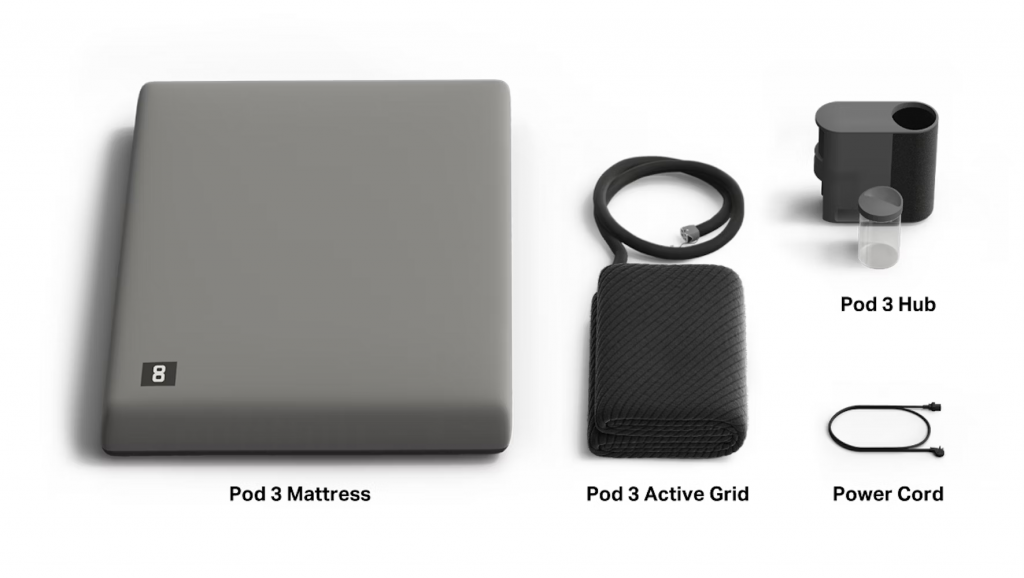
They own the following patents to their name:
| Patent Application | Title | Status |
| US10792461B2 | Methods and systems for gathering and analyzing human biological signals | Active |
| US10105092B2 | Detecting sleeping disorders | Active |
| US10154932B2 | Adjustable bed frame and operating methods for health monitoring | Active |
| US20230054191A1 | Bed device system and methods | Pending |
| WO2016182795A1 | Vibrating alarm system and operating methods | Pending |
| US20200397379A1 | Systems and methods for detecting a biological signal of a user of an article of furniture | Active |
| US20200405998A1 | Sleep pod | Pending |
| US20220063104A1 | The calibration method for the tool center point, the teaching method for the robotic arm, and the robotic arm system use the same. | Pending |
Their tech has the potential to be a pioneer in sleep tech. Many entrepreneurs, athletes, and top-level leaders like Elon Musk and health-tech CEO Bryan Johnson have spoken positively about this product. Acquiring this company can be a huge win for an organization looking to dominate the health-conscious elite economy.
It’s only a matter of time before Apple expands into these segments and enlists or acquires these product innovators into its ecosystem. Tapping into the innovative tech these startups offer can help companies like Samsung, Fitbit, etc., have the upper hand over Apple in the healthcare industry. Tracking the movements of such startups and their patents can thus be an excellent way for these companies to enter the market at the right time.
Conclusion
While we discussed only the MedTech startup partnerships and acquisitions in this article, this strategy is among the other key factors that enabled Apple to pioneer tech innovation and propelled it to be the multi-trillion dollar giant it is today.
However, finding the right startup to meet your specific business needs can be challenging. You’d need to spend weeks of productive hours sorting through endless lists of seed phase companies with confusing business models.
That’s where GreyB can assist you. We have vast expertise in scouting & analyzing successful startups and innovators with the potential to take your company to new heights through strategic acquisition.
Contact us today, and let’s work out a solution per your needs!
Authored by: Hemanth Shenoy, Market Research

